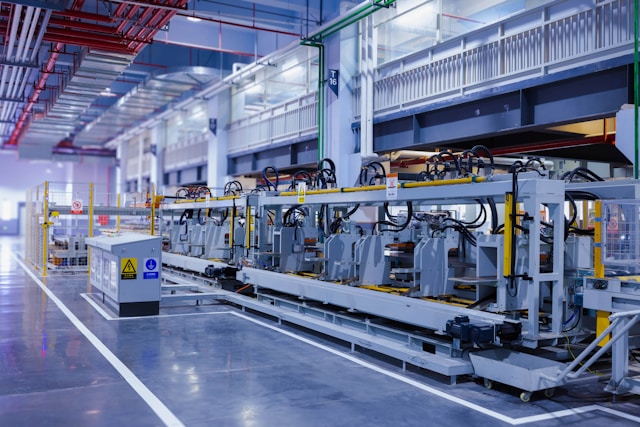As industries embrace digital transformation, the sheer volume of data being generated from machines, sensors, systems, and Electrical switchgear is unprecedented. Managing and making sense of this data is a growing challenge, particularly in sectors like manufacturing, energy, and logistics, where automation plays a critical role.
Here, we dive into the concept of industrial data lakes and explore why they are essential for enhancing automation, driving efficiency, and enabling better decision-making.
What is an Industrial Data Lake?
An industrial data lake is a centralized repository that allows organizations to store vast amounts of raw data in its original format. Unlike traditional data storage solutions, data lakes can hold structured, semi-structured, and unstructured data without needing a predefined schema. This flexibility makes data lakes well-suited for industrial environments, where data comes in various formats from numerous sources, such as IoT devices, machines, sensors, and operational systems.
Data lakes in industrial settings are optimized to manage real-time data streams, time-series information, and large-scale data collected from physical assets and production processes. This makes them a unique and essential component of industrial data infrastructure, enabling businesses to centralize and analyze their data more effectively.
Why Are Data Lakes Essential for Automation?
Industrial data lakes are becoming foundational to automation efforts across sectors, especially as companies look to leverage real-time data for process optimization. Here are some of the ways data lakes support and enhance automation:
Enabling Real-Time Data Access
Automation systems depend on up-to-the-second data to make quick decisions and adapt to changing conditions on the factory floor or in other operational environments. Data lakes make this possible by storing data in a format that is readily accessible, allowing automated systems to retrieve and process fresh data continuously. This real-time data access helps in monitoring equipment, adjusting production parameters, and improving efficiency—all without requiring human intervention.
Supporting Advanced Analytics and Machine Learning
Industrial data lakes also support advanced analytics and machine learning, both critical to modern automation. Data lakes offer an ideal environment for training machine learning models, as they hold diverse and extensive historical data. By analyzing trends and patterns, companies can develop models that predict equipment failures, optimize maintenance schedules, or even forecast production needs, thereby automating processes that previously relied on human input.
Centralizing Data for Cross-Functional Access
A significant benefit of data lakes is the ability to create a unified repository accessible to various departments, from production and maintenance to quality assurance. This centralized approach eliminates data silos, allowing different teams to access and leverage the same data for automated decision-making. For instance, production teams can automate quality control adjustments based on real-time data from sensors, while maintenance teams can automate alerts for potential equipment issues.
Key Benefits of Industrial Data Lakes in Automation
Cost Efficiency
Data lakes help reduce operational costs by consolidating data storage. Instead of investing in separate systems for each department, a data lake can serve as a centralized data repository for multiple teams. Additionally, the data-driven insights provided by data lakes lead to more efficient resource use and reduce downtime, further saving costs through optimized processes and proactive maintenance.
Scalability and Flexibility
As industries evolve, data needs change. Data lakes are highly scalable, allowing companies to store increasing volumes of data without reconfiguring their infrastructure. This flexibility is essential for industrial operations, where new data sources, such as additional IoT sensors or advanced equipment, can be added seamlessly. The ability to scale and adapt to new data sources and formats allows companies to future-proof their automation systems and prepare for growth.
Enhanced Data Security and Compliance
In industrial environments, data security and regulatory compliance are top priorities. Data lakes support enhanced security features, including data encryption and access control, ensuring that sensitive information is protected. Additionally, data lakes make it easier to comply with regulations, as companies can securely store historical data for audits and reports, giving industrial organizations confidence in their data governance practices.
Essential Components of an Industrial Data Lake
Building an industrial data lake involves integrating several components to ensure seamless data collection, storage, and analysis. Below are the core elements that make up an effective industrial data lake.
Data Ingestion and Integration
Data ingestion is the process of collecting data from various sources, such as IoT sensors, SCADA systems, ERP solutions, and manual inputs and bringing it into the data lake. Industrial data lakes often use ETL (Extract, Transform, Load) or ELT (Extract, Load, Transform) processes to prepare data for analytics and automation. A well-implemented ingestion strategy allows data to flow from source to storage without delays, ensuring real-time data availability for automated systems.
Data Storage and Management
The storage infrastructure of a data lake can be built on cloud platforms like AWS or Azure, or on-premises, depending on an organization’s needs. Effective data management practices, including data governance, access control, and quality checks, are essential to prevent data lakes from becoming “data swamps.” A structured approach to data management ensures data integrity and facilitates efficient analytics.
Analytics and Visualization
The power of a data lake lies in its ability to support analytics and data visualization. By using tools like Power BI or Tableau, teams can create visual insights from data, making it easier to identify patterns and make automated decisions. Visualization tools enable non-technical teams to interact with data lake insights, bringing automation benefits to a broader range of functions within an organization.
Conclusion
Industrial data lakes are more than just a data storage solution—they’re a powerful tool for driving industrial automation and optimizing operations. By centralizing, organizing, and providing access to data in real-time, data lakes enable automation systems to function with greater intelligence, precision, and efficiency.
As industries continue to evolve, investing in a robust data lake infrastructure can provide the foundation needed to stay competitive in an increasingly data-driven world.





